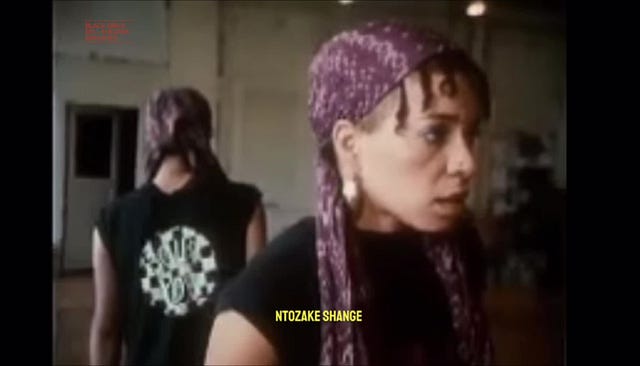The origins and landscapes of your voice / lyric threads lab: week 6 of 7
A guided visualization for meeting the sound and ancestors of your natural voice, for writers and for speakers
Follow along for the next 2 weeks as the first lyric threads lab discusses, writes, examines, and de-constellates lyric poetry and lyric essays. We will practice writing in new ways. We will offer transformative responses to one another in an intimate container. Here, on Substack, I (the guide, the host, the gardener) will detail what we discuss for you and share our generative writing activities.
🌩️ lyric threads lab [the cloud cohort] 🌩️ Week Six:
For each of our weeks, we read a book by a poet or lyric essayist, and we approach the writing process in a different way. The hope is that theses tasks—whether they are familiar or not—open up a possibility for us.
Last week, one of the participants Betty Salamun shared three short written pieces, all of which were written in three distinct forms but they all held together her voice clearly: smart, propulsive, physical, and formally playful. I was reminded of the first poet that seized me when I was growing up, e. e. cummings, and how alive I felt when I danced with his phrases along the page. I wanted to go back to when I wrote and moved like him and worried I put too many stylistic rules around my writing since then. I worried I wanted to sound more discursive, more dangerous, more *something else* than my natural predilections were.
I wondered what getting out of my conscious mind and into my gut-mind, my below-the-belt-mind would do for (re?)discovering my natural voice. I thank Shange and Salamun and cummings for this motive force.
So this week is a little different. I suppose each week is a little different, but this week pulls from our subconscious mind more than the conscious. For Week Six, our book is a collection of essays written by poet, playwright, dancer, performer, and genius Ntozake Shange. Her voice feels singularly hers. Her voice feels as if so close to her bone and blood, to me. When contemplating how to translate my reading experience of Shange’s essays to a generative writing prompt, I felt it was important to explore our origins. And to do so in a way that felt more bodily, more intuitive.
Here’s a video of Shange reading her own words in her own voice:

 Tiktok failed to load.
Tiktok failed to load.Enable 3rd party cookies or use another browser
Guided Visualization: Rediscovery of Your True Voice Through Your Ancestral Landscapes and Spirit
(18 minute 22 second audio recording below)
And so the generative writing prompt is not really one can read on Substack. It requires sinking in and seeing what occurs to your mind’s eye. In this shorter than normal (p)review of the sixth week of the first lyric threads lab, I am offering a ~15 minute guided visualization informed by my practices as a hypnotherapist, mindfulness-based stress reduction practitioner, and mystic. In this visualization, I walk the listener through three phases:
Establishment of energetic protections to ensure a safe, peaceful, and illuminating experience.
A muscle relaxation and grounding breath moment for allowing the conscious busy-mind to rest in order for the subconscious, more expansive mind to come forward.
A gentle guidance for (re)discovery of one’s roots, one’s inner landscapes, and the ancestor(s)1 or guide(s) who helps you see how your voice has been shaped over time, how it has been quieted, and how your voice sounds in its natural state. The aim for this is that the writer sees more clearly how their voice *is* so they can more fully embody it.







